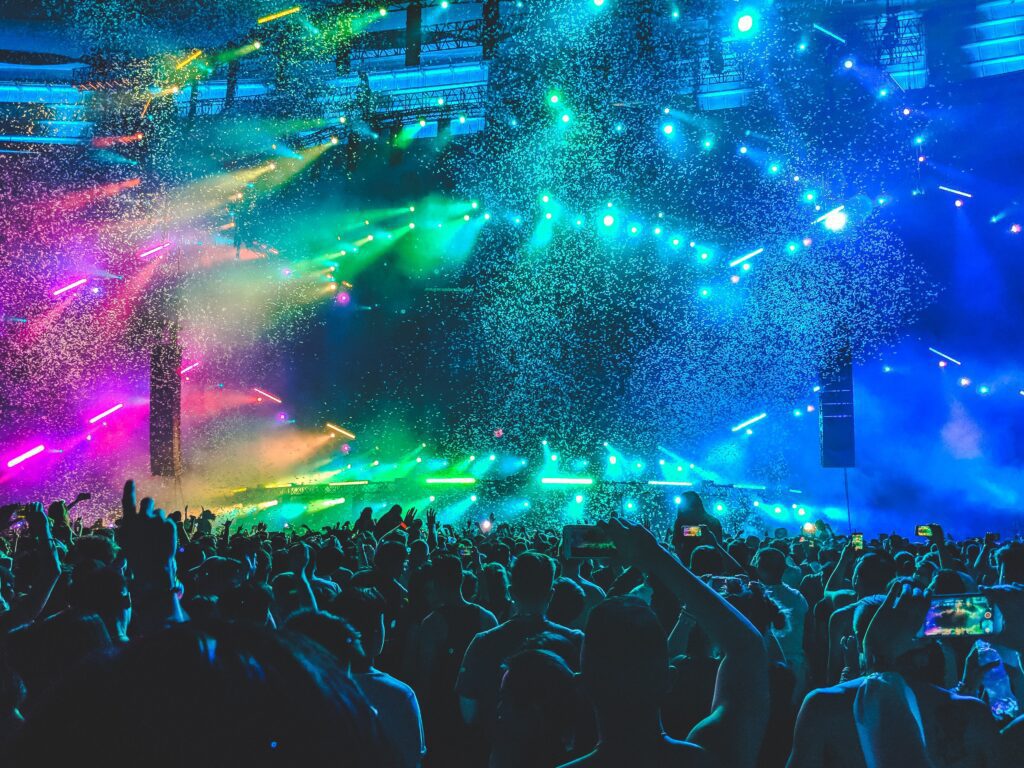
The Internet of Things (IoT) has been transforming entertainment and has given it new ways of creating, delivering and consuming content. The wide-ranging utility of IoT devices has improved user experience while enhancing the safety and security of users. The media and entertainment (M&E) companies can leverage IoT technology to improve the overall quality of their products and services, and provide users with personalized experiences, reduce costs and increase efficiency.
For example, imagine settling down in your home to watch a movie. The room dims, the sound-picture settings and even the entertainment preferences adjust tailored to the user requirements. All of these actions happen automatically, seemingly like magic. This is IoT and big data in motion. IoT devices and sensors gather information, which is then analyzed and processed to create personalized experiences.
Considering such examples of how IoT can be leveraged, we explore more advantages of IoT in the media and entertainment industry.
Advantages of IoT in the entertainment industry:
- Asset management: Employing IoT for Asset management in the media and entertainment industry enables using sensors, big data, data analytics and cloud platforms to track, monitor and ultimately optimize the performance of digital and physical assets. The steps to asset management include data acquisition, data consolidation, data hooks and data visibility. Examples of M&E industry assets are cameras, microphones, speakers, projectors, servers, electronic bracelets and more. The benefits of asset management are improved asset utilization, customer experience and engagement, reduced operational costs and maintenance, and increased revenue streams.
- Optimizing content or personalized content recommendation: IoT helps create engaging entertainment experiences with customized offers and content that resonates with the viewer. IoT and predictive analytics in M&E companies are vital in maintaining customer engagement and increasing content consumption. Data collected by IoT sensors enables analytics to identify types of content most likely to be viewed and this information can be used for content creation. It can help identify and target potential new audiences with content that is based and tailored to their interests. Increasing social media use has also set the stage for generating individual connections with viewers, and personalized content can be delivered as per preferences.
- Immersive content: IoT sensors within devices like augmented reality (AR), virtual reality (VR) and mixed reality (MR) are helping build an entire ecosystem that offers immersive content for users. These sensors and devices provide real-time data integration, connectivity and personalization, delivering interactive, personalized and engaging M&E content.
- Targeted advertising: Program advertising is a major source of revenue for many media and entertainment brands. IoT sensors and devices can gather data such as age, activities, preferences, and consumption patterns from users. Predictive analytics on this data gives a better understanding of the content customers watch at what time and duration. This helps take the guesswork out of what should be advertised and helps advertisers and businesses target customer preferences. This visibility helps improve the efficiency of ad targeting, resulting in higher conversion rates, increased TRPs and revenue.
- Venue management: The Media and entertainment industry keeps evolving and harnessing the power of interconnected devices to monitor and control the venue intelligently. It can help improve operational efficiency by gathering real-time data to automate various processes and enhance user experiences. Energy consumption is a significant concern today, and using IoT to optimize energy usage makes much sense. With smart devices, sensors, and automated controls, venues can monitor and manage energy consumption patterns, easily identify inefficiencies, and implement energy optimization strategies. Such IoT device utilization can reduce operational costs and contribute to a greener and sustainable future. Security is a prime concern in M&E venues. IoT provides advanced and innovative ways to increase safety measures. IoT-based surveillance security systems can provide real time monitoring and notifications for an immediate response towards any potential threats.
- Cost optimization: Data gathered by IoT can be used for cost optimization in M&E by using various analytic methods. Data analytics of resource utilization, audience response and content appreciation can help identify areas where cost can be trimmed or resources can be optimized.
The Internet of Things is a powerful technology that has the potential to revolutionize the media and entertainment industry. It can help generate better content, target audience more effectively, optimize operations and improve customer experience. Services for IoT app development can help shape interactive experiences, improve customer experience and monetize content for the media and entertainment industry.
